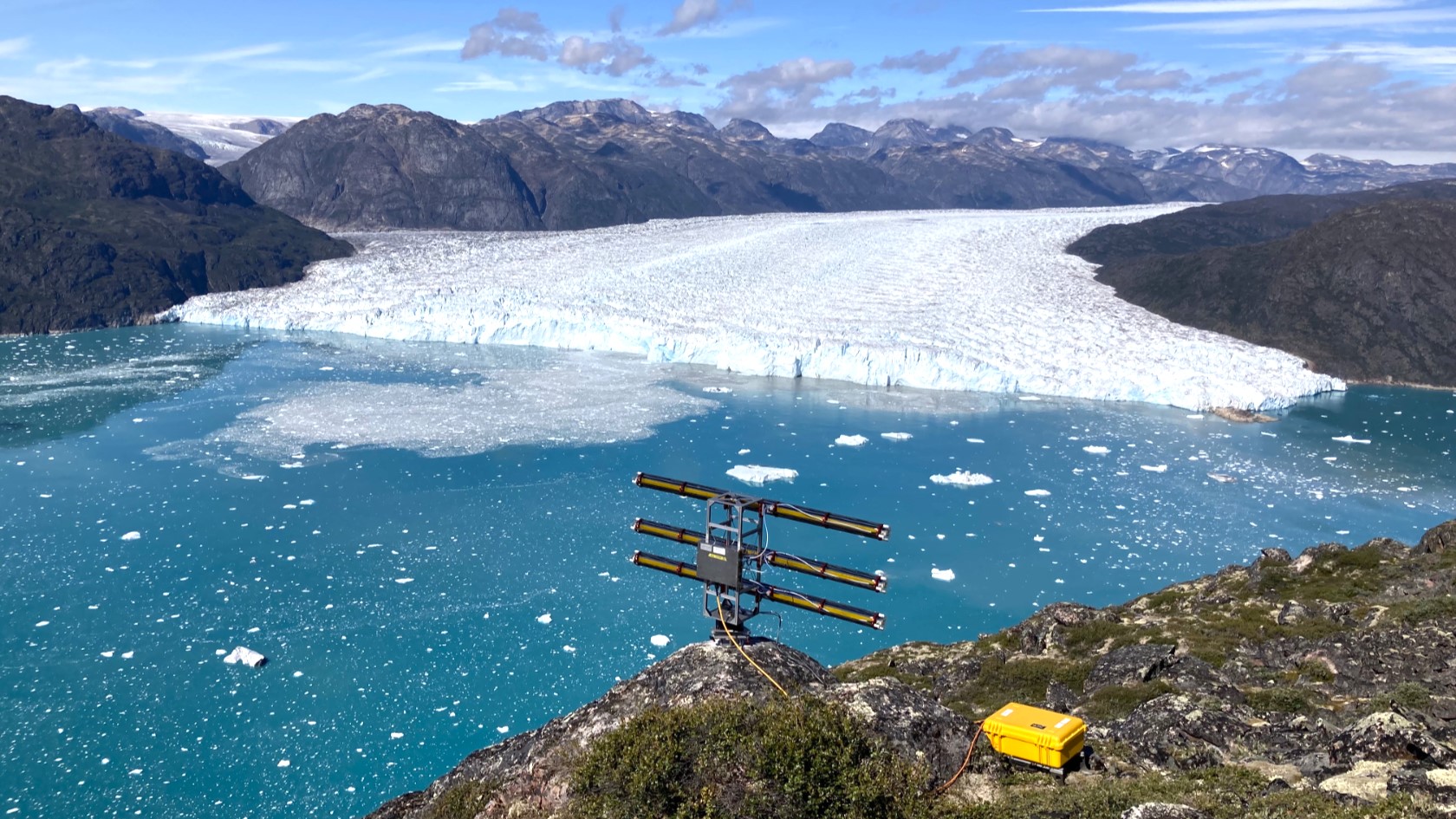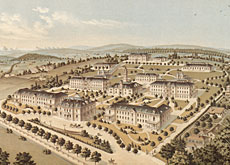
Swiss lasers beam up satellite communications

Swiss precision and laser expertise has enabled Contraves Space to be first to market with optical terminals for satellite communications.
After hiring some of the key engineers who worked on a pioneering European Space Agency project, the Zurich-based company tapped into know-how at universities across the country, as well as smaller innovative firms.
Its aim was to solve some of the technical issues that stood in the way of commercial use of laser communications in space.
Contraves Space, a subsidiary of Unaxis Holding, will sell its new optical terminals to satellite service providers, such as television broadcasters who want to enable telecommunications services over their satellite networks.
Slow take off
Despite optical systems having a number of advantages over today’s radio-based systems, Contraves says that demand for optical terminals for inter-satellite links will be begin in 2006.
The reason for the slow takeoff of the market is the sudden shrinkage in demand by telecommunications network operators for equipment.
Many of the service providers who had planned to build satellite networks have disappeared from the market.
“The broadband satellite market was never able to support the number of competitors that emerged during the height of the dot-com boom,” says Christopher Baugh, principal analyst at Northern Sky Research, a market research firm that covers the satellite sector.
Nevertheless, Internet traffic continues to double every year. As satellite operators replace spacecraft, they will be considering installing higher capacity optical communications equipment.
According to Guy Baister, the optical terminal product manager, there is already interest from European service providers.
Low volume
By 2011, he expects sales of 4 to 6 a year within Europe. This is a low volume market, but Baister points out that in the aerospace industry sales are measured differently than in the mainstream telecoms market.
“For us 4 -6 terminals per year are not ‘low volume’ but a very good business,” says Baister.
Nick Maynard, a satellite services market analyst for Yankee Group, says that the Contraves’ figures sound “quite realistic”.
Maynard believes inter satellite communications is niche market with some clear advantages over wireless, such as not being regulated and being highly secure.
“It is suited well for specific applications where optical is better than radio. Vendors can expect to sell a few here and there over the medium term,” says Maynard.
How inter-satellite communications work
When a phone call or Internet file transfer session is initiated, the signals can go over the terrestrial network or via radio (RF) signals directly over the satellite network.
Once in space, the signals are relayed from satellite to satellite, via RF inter-satellite links until they reach the satellite nearest the gateway to the terrestrial network to complete the call.
The disadvantages of RF are well known. The equipment is bulky and heavy, which is a huge penalty in the aerospace industry.
Plus capacity is limited. The maximum throughput for wireless in space is around 1 gigabit per second today. However, most links enable a few hundred 100 kilobits per second, typical for voice traffic.
In optical communications throughput begins at one gigabit per second.
In addition, it is not the most secure way to communicate over long distances. It is impossible to “eavesdrop” on optical signals without being detected because to tap the link would be to break the beam of light.
Satellite network operators would like to switch from radio to optical communications, but free space optics is still a relatively immature technology, even on earth.
There are optical links in space today but these are US military applications. Not much is in the public domain about their capacity or reliability.
In a fly’s eye
The challenge, as it is in any free space optics application, is to get a direct line of sight between the two optical terminals and to maintain the link throughout the communications session.
The laser’s beam of light has to hit a moving target (the other satellite’s optical receiver) and then be careful directed to flow through to a tiny fiber optic cable for processing.
The distance between the satellites can be up to 45,000 km. If these distances were not challenging enough, there is the drift tendency and satellite vibration to deal with too.
Indeed, watching video footage of satellites, it seems as if the glass and titanium structures are silently floating in orbit, but in fact a satellite does a lot of shaking and shuddering. It rotates on is own axis and cruises off course. Onboard thrusters nudge satellites back into position every so often.
“When all the switches and thrusters are firing, as is sometimes the case, it can sound like a washing machine,” says Guy Baister who heads up the optical terminal product development at Contraves Space.
This makes the line of sight and maintaining the link part very difficult. It is like trying to track the eye of a fly with a laser beam over an area the size of an open umbrella from the distance of 1km, according to Baister.
Or put another way the system has to point a laser beam from Paris to London and accurately pinpoint the big hand on Big Ben on the Tower of London.
Contraves is using an ultra-precise ranging and pointing mechanism developed by the Interstate University of Applied Sciences of Technology Buchs (NTB) to address this aspect.
No fear of burnout
Laser “redundancy” has to be built into the system in case one of the lasers burns out.
In this case, BrightPower in Vaud and Fisba Optik in St. Gallen have delivered the components. The patented Brightpower laser modules are designed to take up the same amount of space and power as simpler laser systems, but they offer multiple laser diodes instead of single configurations.
The electronics sub-system also has redundancy where the expected radiation dose from electrons and protons could cause failures, said Baisters.
Contraves Space, which has revenues of SFr 120 million a year today with 330 employees, is traditionally a maker of rugged structures for spacecraft.
With the new optical terminals and other opto-electronic products recently developed, it enters a new segment of the space and telecommunications industry.
At the same time, it becomes one of the few companies in the optical sector in Switzerland that sells systems, as opposed to sub-systems, devices, or components.
Most of the other Swiss companies active in optical communications markets, including Colibrys, Alpes Laser, GAP Optique, Luciol, or BrightPower, sell their products to sub-systems vendors or original equipment manufacturers, such as Honeywell, Agilent, and Nortel Networks.
Valerie Thompson

In compliance with the JTI standards
More: SWI swissinfo.ch certified by the Journalism Trust Initiative






































You can find an overview of ongoing debates with our journalists here . Please join us!
If you want to start a conversation about a topic raised in this article or want to report factual errors, email us at english@swissinfo.ch.